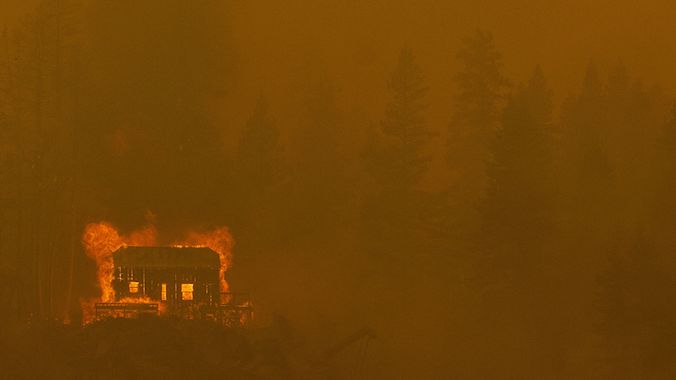A Decade of California Wildfires Cost 50,000 Lives and Half a Trillion Dollars
Photo by Peter DaSilva/UPI/Shutterstock
However bad and expensive we think climate change-related impacts have been or will be, the next study will almost certainly find that they are worse.
That’s the news from a study by researchers at UCLA, Howard University, and several others published on Friday in Science Advances. They found that between 2008 and 2018, the pollution generated by wildfires in California likely led to more than 52,000 premature deaths, for an economic impact of as much as $456 billion.
Previous studies have found that the pollution known as PM2.5 (particulate matter of no more than 2.5 microns in diameter), which penetrates our lungs and can cause all sorts of issues, does cause thousands of deaths and billions in damage, across various parts of North America. But no one had looked specifically at California before, where some of the country’s most devastating fires have occurred in recent years.
The researchers estimated mortality based on acres burned and a “dose-response” analysis of exposure to PM2.5. At the high end of their estimates, the first over their 11-year study window killed 55,710 people.
They then used the EPA’s “value of a statistical life” measure to arrive at a total economic impact of all that death: between $432 and $456 billion. Presumably this could have ballooned even further if they extended the study by a few years: the most acres burned in their window was in 2018, with just under 2 million; more than 4.3 million acres burned in California in 2020, and more than 2.5 million in 2021.
“The large, growing impacts of wildfires on air pollution along with the mortality and economic burden presented here raise questions about societal investments in wildfire prevention and management,” the authors write. The state government along with allocations from the Inflation Reduction Act is set to commit an extra $6.7 billion to fighting wildfire in California, adding to an existing annual budget of about $2.9 billion, but the authors say “such investments fall well below the projected cost savings if greater investments were made to prevent and manage wildfire impacts.”